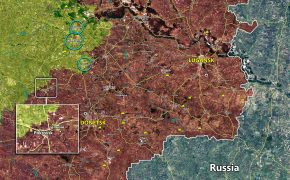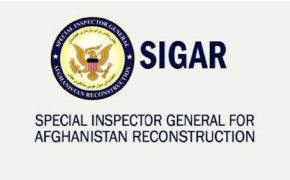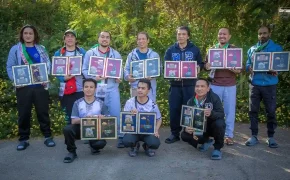The AbuZayd-Pinheiro Committee: Systematic Misinformation on Syria

WRITER:
Dr. Tim Anderson is a Senior Lecturer in Political Economy at the University of Sydney. He researches and writes on development, human rights and self-determination in the Asia-Pacific, Latin America and the Middle East.
In mid 2012, as foreign jihadists poured into Syria, UN Secretary General Ban Ki Moon authorised replacement of the Special Mission on Syria (UNSMIS) with a Geneva-based ‘Independent International Commission of Inquiry on Syria’ (IICOIOS), co-chaired by US diplomat Karen Koning AbuZayd and Brazilian Paolo Pinheiro.
Unlike UNSMIS, led by Norwegian General Robert Mood and based in Syria, the IICOIOS was based in Geneva, never visited Syria and was deeply compromised by its link to US diplomacy and its reliance on jihadist sources. The US Government, by then, was arming anti-government jihadist groups in Syria. Ban had thus embedded a deep conflict of interest in a nominally ‘independent’ UN agency.
The Abuzayd-Pinheiro group, joined by Italian lawyer Carla del Ponte, issued a series of distant reports which echoed western war propaganda against Syria. Notable amongst these were reports on the 2012 Houla massacre, a report on the 2016 liberation of Aleppo, and a recent report which seeks to blame a series of chemical weapons attacks in 2017 on the Syrian Government. Carla del Ponte, in a better moment, revealed in mid 2013 that the first use of sarin gas in Syria was by Jabhat al Nusra. But none of this appeared in the group’s reports.
In a pretence at even handedness, the group has made criticism of the terrorist groups and the US-led bombardment of Syrian cities. However when it comes to accusations against the Syrian Government it pays literally no attention to genuinely independent evidence, such as that from Syrian civilians who have blamed jihadists for ‘false flag’ massacres, and reports from the US military forensic expert Professor Ted Postol.
The result is what we might expect of a US-embedded organ: a partisan adjunct to official war propaganda, vilifying the Syrian Government and the soldiers of the Syrian Arab Army, as they struggle to defend their country. The UN group’s systematically distorted misinformation, during a war, most likely constitutes a war crime, as propaganda for war is prohibited. Let’s look at three key reports.
The Abuzayd-Pinheiro’s first report, on the May 2012 Houla massacre, set a standard for low grade but well timed war propaganda. As I document in chapter eight of my book The Dirty War on Syria (Anderson 2016), 15 independent witnesses gave great detail about the massacre of over 100 villagers in rural Homs by members of the Farouq Brigade (FSA) and several named local collaborators. The jihadists, expelled from Homs city by the Syrian Army, took revenge on families in Houla who had participated in recent elections, violating the jihadists’ call for a boycott.
UNSMIS head General Robert Mood had recognised conflicting reports coming from Houla, which was then under Farouq-FSA control. However UNSMIS was rapidly disbanded and the Abuzayd-Pinheiro group issued a report which unambiguously blamed pro-army civilian militia (‘shabiha’). Based on a few long-distance interviews, arranged by the Farouq brigade, they IICOIOS tried to blame the atrocity on the Syrian Government. However, unlike the local eyewitnesses (reported by Syrian, European and Russian media), they could provide no names, little detail and no motive (HRC 2012: 20).
Their report came before a UN Security Council meeting in which the US sought authorisation for Libyan-style attacks on Syria in the name of ‘civilian protection’ (a ‘no fly zone’). The manoeuvre failed and the report was strongly criticised at the UNSC, with Russia, China and India refusing to accept it as a basis for action. However it was used as a pretext for many other countries to downgrade their relations with Syria.
Almost five years later the AbuZayd-Pinheiro group tried to portray as a ‘crime’ the liberation of the city of Aleppo from al Qaeda aligned groups. They paid no attention to the thousands of relieved and celebrating civilians who had been rescued from al Qaeda held East Aleppo. Once again the assertions were reckless and partisan. The group falsely claimed that the liberation of the city had involved ‘daily air strikes’ on the eastern part of Aleppo city (HRC 2017: 19). Yet it was reported widely in foreign media that air strikes on the east part of the city were suspended on 18 October (BBC 2016; Xinhua 2016). NPR’s Merrit Kennedy (2016) reported ‘several weeks of relative calm’ during the ‘humanitarian pause, aimed at evacuating civilians. The ‘resumption’ of airstrikes almost one month later was aimed at the armed groups in rural Aleppo, not on the shrinking parts of the city held by the jihadists (Pestano 2016; Graham-Harrison 2016). Of course, al Qaeda aligned ‘media activists’ did claim the city was being continuously bombed (CNN 2016). However the UN commission, as Gareth Porter pointed out, ‘did not identify sources for its narrative … [but rather] accepted the version of the events provided by the ‘White Helmets’’, a jihadist auxiliary funded by the US and UK governments (Porter 2017). This report seemed to belatedly support calls by the UN Secretary General’s representative, Stefan di Mistura, for the Syrian Government to allow jihadist groups to maintain control of a lage part of the country’s second city. Syria would never allow that to happen.
In its most recent report of September 2017 the AbuZayd-Pinheiro group criticised terrorist groups and the US air strikes, in a pretence at impartiality. But it added a remarkable claim that had no basis in independent evidence: that ‘government forces continued the pattern of using chemical weapons against civilians in opposition held areas’. Abuzayd-Pinheiro claimed that 20 of 25 chemical weapons attacks in 2017 ‘were perpetrated by government forces’, referring to incidents at Khan Sheikhoun, al Latamneh and East Ghouta (HRC 2017b: 1, 14). Yet critical, independent evidence from US Professor Ted Postol had disproved the notion that the Khan Sheikhoun incident came from an air strike (Postol 2017). Indeed, the Syrian Government says the Army never once used chemical weapons during the 2011-2017 conflict, and no independent evidence contradicts this position. For example, in chapter nine of my book (Anderson 2016) I document the catalogue of independent evidence that discredited the ‘chemical weapons ‘false flag’ in the East Ghouta, of August 2013.
So, on what evidence were AbuZayd-Pinheiro’s claims based? They refer to interviews with victims and aid providers in jihadist controlled areas, some satellite images, a report of the UN’s OPCW (which did not attribute blame) and a non-response from the Syrian Government (HRC 2017b: 14-16). Clearly Damascus refuses to cooperate with AbuZayd-Pinheiro because of their previous propaganda activity. In the case of Khan Sheikhoun incident, the OPCW refused Russian invitation to visit and investigate, preferring to rely on information and samples provided by jihadist groups and their auxiliaries, such as the US-UK funded ‘White Helmets’. Once again, virtually all evidence cited by the Abuzayd-Pinheiro group came from US-backed and jihadist sources – al Nusra aka Hayat Tahrir al Sham, Ahrar al Sham, Jaish al Islam and Faylaq al Rahman (HRC 2017b: 14-16).
This latest AbuZayd-Pinheiro report came as the Syrian Army broke a three-year ISIS siege on the eastern City of Deir Ezzor. Fake chemical weapons claims at this time might briefly distract from this latest Syrian victory over the NATO-Saudi proxy armies, but they carry less import than before. Nevertheless, this US-led ‘independent’ group showed itself partisan and propagandist to the end.
Source: Ahtribune




The UN should reform this group. It obviously has no ability to function as on objective observer or as an effective intervenor.